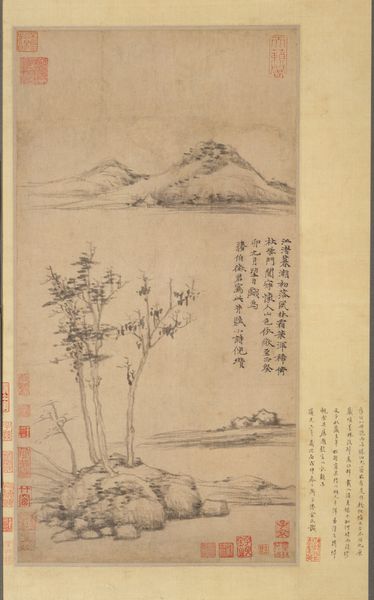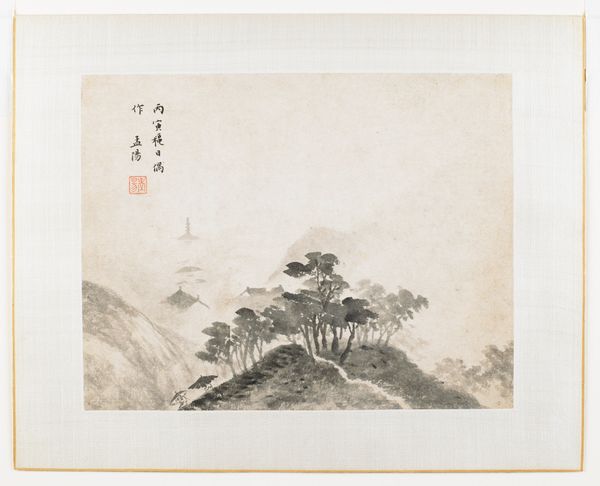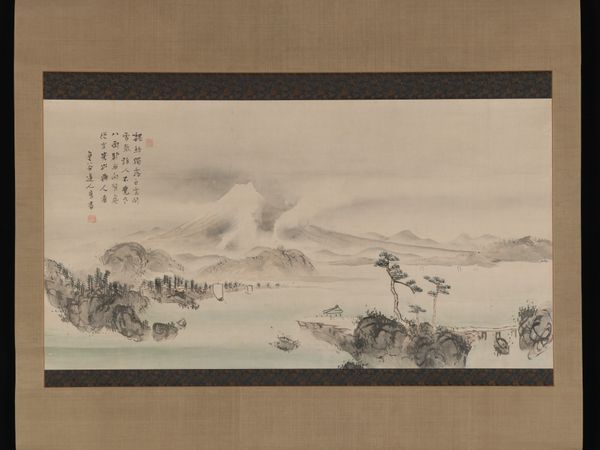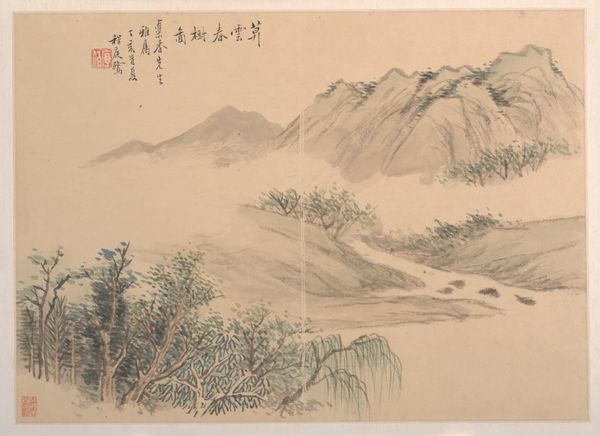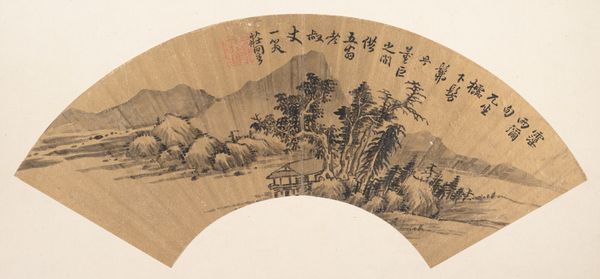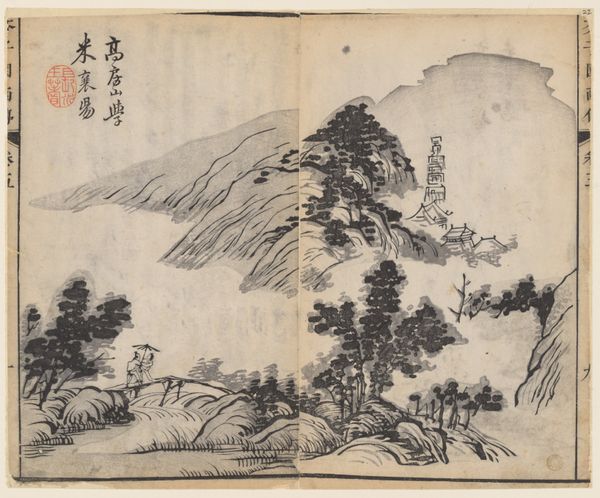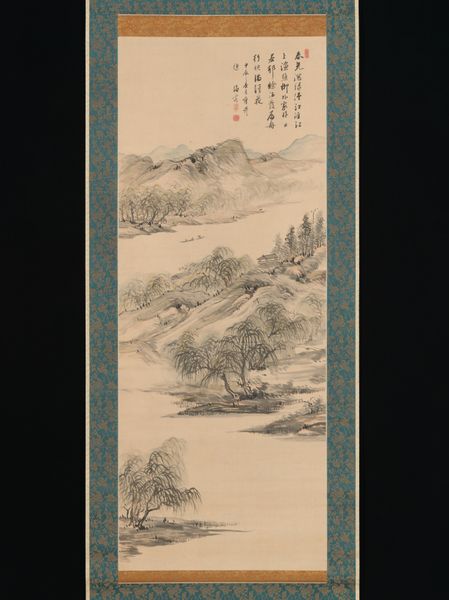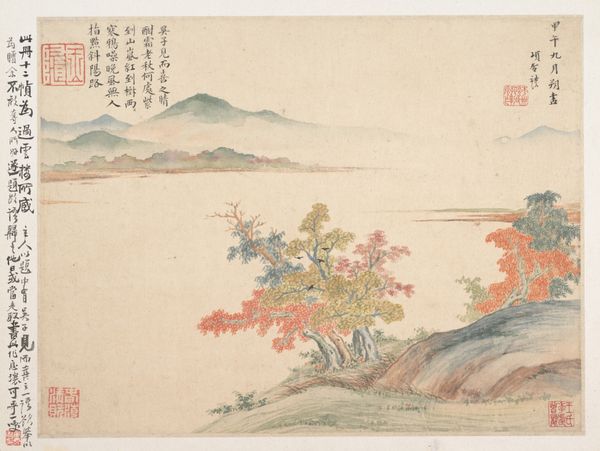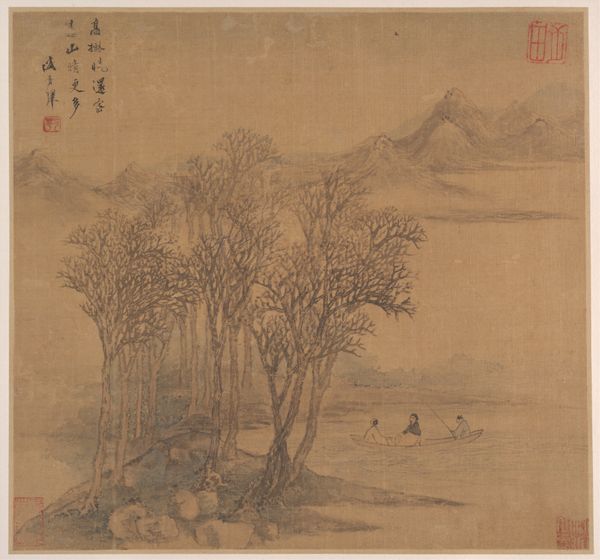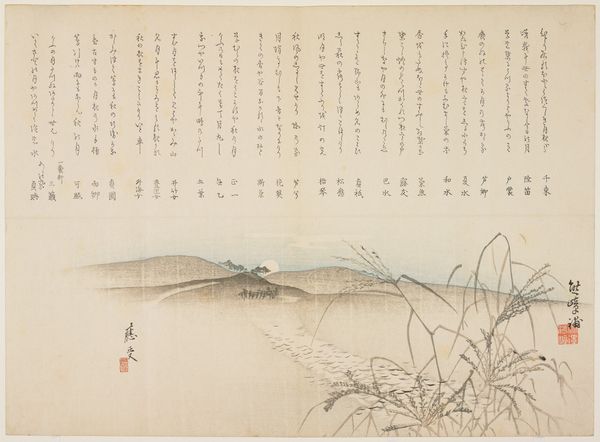
painting, ink
#
painting
#
asian-art
#
landscape
#
figuration
#
ink
#
orientalism
#
line
#
calligraphy
#
monochrome
Dimensions: 10 7/8 x 13 3/4 in. (27.6 x 34.9 cm)
Copyright: Public Domain
Editor: This ink painting, titled "Landscapes," comes from sometime between 1800 and 1842 by Pan Simu. There's something very calming about its monochrome palette. The brushstrokes are so delicate, but also so sure. I am really interested in how art displays or affects history. How would you interpret this work within its historical context? Curator: It’s a beautiful piece, isn’t it? We need to think about this painting as participating in the larger cultural dialogue of the Qing Dynasty. What do you notice about the inclusion of calligraphy in this landscape, and its relation to the pictorial space? Editor: Well, it almost feels like another layer of the landscape. It doesn’t feel separate; it’s integrated into the scene, like it's part of the mist. I do wonder what the purpose is. Curator: Exactly. Calligraphy, particularly in literati painting, serves multiple purposes. It's an expression of the artist's cultivated mind, their engagement with poetry, philosophy, and history. Think about what it meant for an artist to inscribe their own thoughts or allusions onto the landscape. What kind of audience would connect with that type of expression? Editor: So, it was about showcasing your intelligence, cultural understanding to your peers? Curator: Yes, but think more broadly about what art did in public life, how art communicated and created status for its creators and owners. This piece wouldn't just hang on a wall, it would have provoked dialogue, a sharing of learning, potentially reinforcing class and societal norms. In what kind of setting might that happen? Editor: A scholar's studio, maybe? Somewhere refined, for those who are educated and informed about current affairs and classical knowledge. Curator: Precisely. Thinking about where and for whom the art existed adds to what we are able to learn from the image, outside of face-value understanding of it. Editor: It’s like unpacking a story contained within the brushstrokes. It feels like a privilege to understand that now. Curator: Indeed. It shows us how art is inseparable from its history and function, and how that relationship informs not just what's made, but its intended use and perception.
Comments
No comments
Be the first to comment and join the conversation on the ultimate creative platform.
